A spectacular male Chinese Grosbeak in Rudong County!
Birding Adventure to Rudong County, Jiangsu Province
Our second major nature-based outing since our arrival in
China was to Rudong County in Jiangsu Province, located about three hours north
of Shanghai on the coast. Our base
camp was in Nankou Town, a small but growing fishing village located at the
perfect spot to catch many migratory stopovers. Nankou is also home to many microhabitats that allow for a good diversity of species. I learned of this “hotspot” from Shanghai Birding Tours, who
offer outings to many of the local birding hotspots near Shanghai and the
adjoining provinces. Zhang Lin is
the owner and operator of the website, and he was our guide during our trip to
Rudong. His knowledge of the local
bird fauna is superb and one would be hard pressed to find a better guide
anywhere. He is familiar with most
birdcalls and can sight-ID virtually anything that flies by within 200
meters!

Our guide, Zhang Lin of Shanghai Birding Tours, spotting the elusive Spoon-billed Sandpiper on the mudflats of Rudong. He found three and Som found two!
With Zhang Lin’s expertise, we were able to nail 99 species
for the two-day trip to Rudong.
But more impressive than the numbers of bird species seen, were the
rarities we encountered there. The
high point of course was the five Spoon-billed
Sandpipers we saw over the two days.
Three of them were at fairly close range, and Som even found two on her
own in the same field of view! I
felt privileged to see at least 1% of the entire world population of this
amazing little bird species. Other
rarities seen during our trip were Saunders’s
Gulls, Relict Gulls, Nordmann’s Greenshanks & White-throated Rock Thrushes. While I was really hoping to get some spectacular images of the fauna on our trip, the lighting and air quality was very poor. These facts combined with the difficulty in approaching the critters, even with my massive lenses, made photography difficult. So I am apologizing in advance for the poor quality of most of the images on this page. But all of this was more than made-up-for by the impressive numbers of birds seen on sight. Conservative estimates in the tens of thousands over the two days would be fair to state!

The Black Locust (Robinia species) galleries lining the old sea walls of the county were home to dozens of species of forest dwelling species.
Rudong is in a unique location with a variety of habitats
that may exist for sadly a very short period of time. The entire region is under intense pressure with
construction happening everywhere.
Habitats are disappearing beneath the blades of bulldozers right before
your eyes there in Rudong, as is the case with pretty much everywhere in China
today. Another major threat
happening in the region involves an exotic grass, Spartina, ironically the same damn grass that was invading and
wreaking havoc in my old home region of Puget Sound. Spartina is
“reclaiming” tens of thousands of acres of mudflats that were once the feeding
grounds to countless numbers of migratory and breeding shore birds.

Massive regions of the mudflats are being "reclaimed" by the invasive Spartina grass which was imported by China to reclaim the wetlands of the Shanghai region years earlier in order to build Pudong. Now vast tracts of mudflats are gone forever. This patch was "reclaimed" in a matter of two years!
The little that is left in Rudong, is home to an impressive
array of birds, some residents and some migratory. We saw literally tens of thousands of shore birds in the
mudflats. The Black-locust forest galleries that
populate the old sea walls of the region are home to an impressive assemblage
of forest birds as well. We
encountered several species of thrushes, tits and raptors in these
regions. The old abandoned
freshwater fishponds of Rudong are now reed habitats in which you can find many
bunting species and, and my personal favorite, the Reed Parrotbill, which we saw in high numbers in multiple
locations. One of the more
impressive sights was the dozens and dozens of migrating Amur Falcons we saw on Saturday. Strangely on Sunday, we saw only one! The aggregations of White Wagtails in the late afternoons
were also very impressive.

Som enjoying a seafood shopping splurge in Nankou's central market!

Fresh seafood was the name of the game on this trip.
While in Rudong, we sampled the local flavor a bit as
well. We had the local seafood at
every meal, and even stocked up on it for some home cooking back in
Shanghai. This region of China is
not known for its outstanding cuisine, but we did have some lovely dishes in
the local restaurants of Nankou town.
We enjoyed our short encounters with the local people there, who were
clearly not accustomed to seeing foreigners very often. We found the Nankou folks to be
friendly and genuinely curious, and our numerous trips to the market were
always an adventure!

Possible (probable) tracks of a Siberian Weasel seen along the mudflats.
We attempted to trap some small mammals with no luck on one
evening. We did see tracks on a
couple occasions, perhaps of a Siberian
Weasel and maybe even a Raccoon Dog
out in the mudflats and reed beds respectively. Zhang Lin has seen Nutria
and Hedgehogs on numerous trips in
the past. I will be visiting
Rudong again in the future so I will hope to have a chance for some mammal
species some time soon.
Rudong is just the first of many hopeful trips in China with
wildlife being the main emphasis.
Our future trips include:
Poyang Lake for cranes and waterfowl; Yancheng Nature Reserve for Pere David’s Deer and Red-crowned (Japanese) Cranes; Yunnan
for Snub-nosed Monkeys, Hoolock’s Gibbons, Phayre’s Langurs and
Black-necked Cranes; Folong Nature Reserve for Giant Pandas, Golden Takin and Golden Pheasants. We also hope to get out to the Tibetan
Plateau for the many species that can supposedly be seen fairly easily
there. Good luck to us!
******
Here are some more images of our birding expedition to Rudong!

Common Kingfisher (Alcedo atthis)
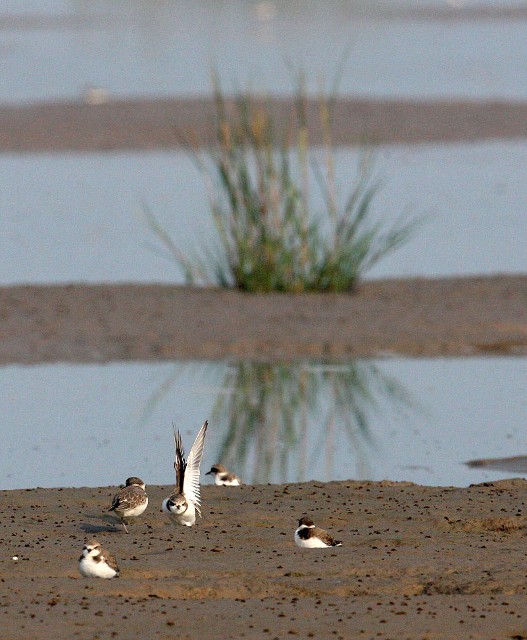
Kentish Plover (Charadrius alexandrinus)

Daurian Redstart (Phoenicurus auroreus)
 Grey Plover (Pluvialis
squatarola)
Grey Plover (Pluvialis
squatarola)

Reed Parrotbill (Paradoxornis heudei)
 Grey Heron (Adeola
cinerea)
Grey Heron (Adeola
cinerea)
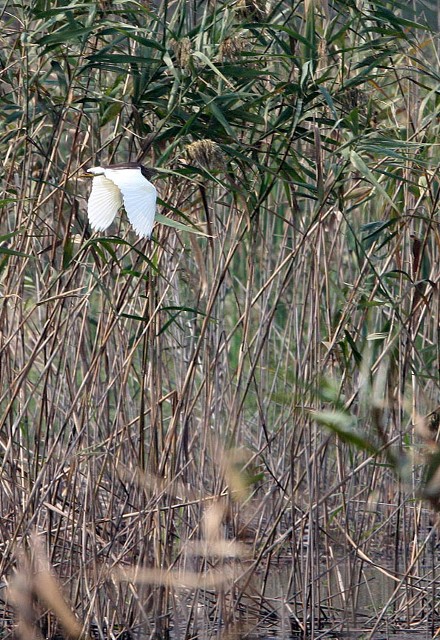
Chinese Pond Heron (Ardeoloa bacchus)

Saunders’s Gull (Saundersilarus saundersi)

Saunders’s Gull (Saundersilarus saundersi)
 Chinese Grosbeak (Eophonia migratoria)
Chinese Grosbeak (Eophonia migratoria)
 Nordmann’s Greenshank (Tringa guttifer) The bird standing on the far left front of this image is one of the several Nordmann's Greenshanks we saw this weekend.
Nordmann’s Greenshank (Tringa guttifer) The bird standing on the far left front of this image is one of the several Nordmann's Greenshanks we saw this weekend.
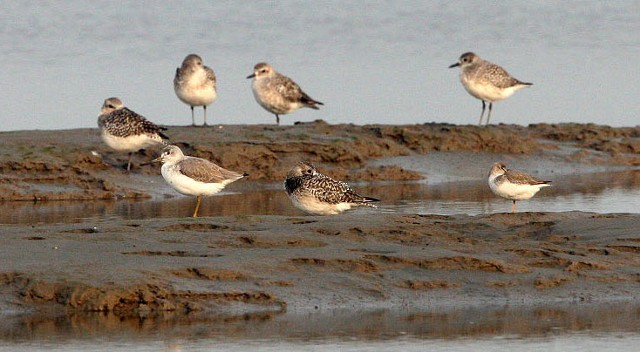 Nordmann’s Greenshank (Tringa guttifer) is the one on the left front! The rest are Grey Plovers, which we saw in the high hundreds at least.
Nordmann’s Greenshank (Tringa guttifer) is the one on the left front! The rest are Grey Plovers, which we saw in the high hundreds at least.
 Common Greenshank (Tringa nebularia)
Common Greenshank (Tringa nebularia)

Bean Goose (Anser fabalis)

Blue-and-white Flycatcher (Cyanoptila cyanomelana)

Blue-and-white Flycatcher (Cyanoptila cyanomelana)

Amur Falcon (Falco amurensis)

Dunlin (Calidris alpina)
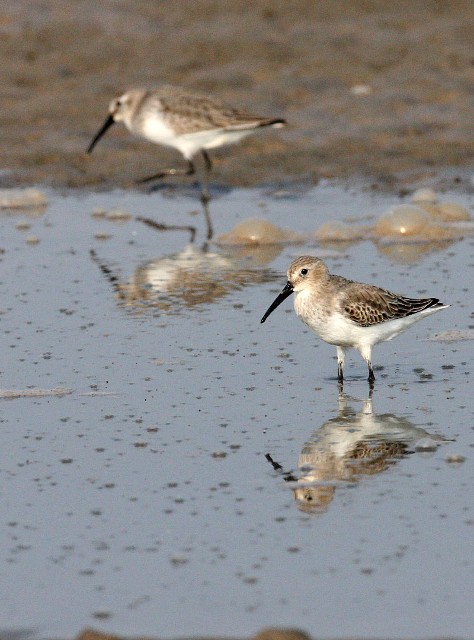
Dunlin (Calidris alpina)

Dunlin (Calidris alpina) in flight over the mudflats of Rudong


Black-faced Bunting (Emberiza
spodocephala)

Eurasian or Great Bittern (Botaurus stellaris)
 Eastern Great Tit (Parus minor)
Eastern Great Tit (Parus minor)

White’s Thrush (Zoothera dauma)
 Red-necked Stint (Calidris ruficollis)
Red-necked Stint (Calidris ruficollis)

Eurasian Siskin (Carduelis spinus)

Although we could only get this close to these amazing little birds, we did manage to see FIVE Spoon-billed Sandpipers (Eurynorhynchus pygmeus) with the help of Zhang Lin and Som's amazing spotting abilities! I was thrilled to see one of the rarest birds on the planet. There are fewer than 500 left on earth sadly.
 Spoon-billed Sandpiper (Eurynorhynchus pygmeus)
Spoon-billed Sandpiper (Eurynorhynchus pygmeus)
 Broad-billed Sandpiper (Limicola falcinellus)
Broad-billed Sandpiper (Limicola falcinellus)

Red-necked Stint (Calidris
ruficollis)

Red-necked Stint (Calidris
ruficollis)

Feeding tracks of a Red-necked Stint in the mudflats.

Red-flanked Bluetail (Luscinia cyanura)
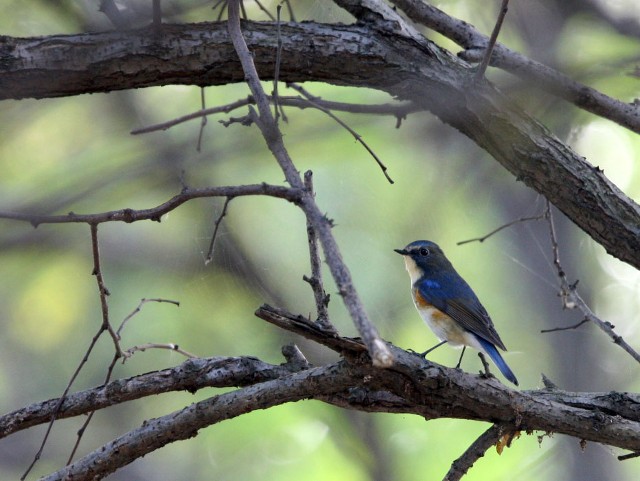
Red-flanked Bluetail (Luscinia cyanura)
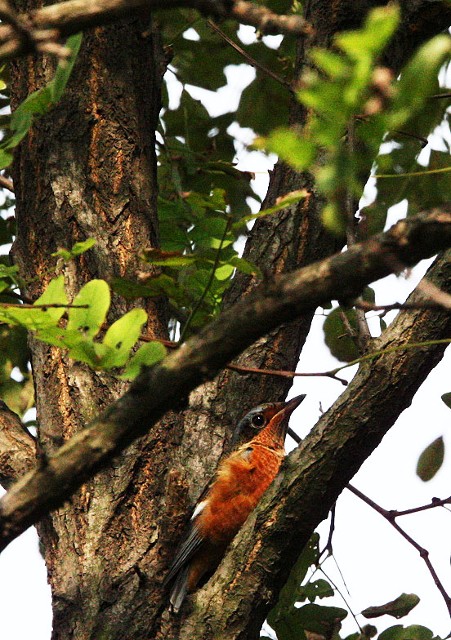
White-throated Rock Thrush (Monticola gularis)

Eyebrowed Thrush (Turdus obscurus)
Other Critters!

A Nymphalid checkerspot on a wild Asteraceae flower.
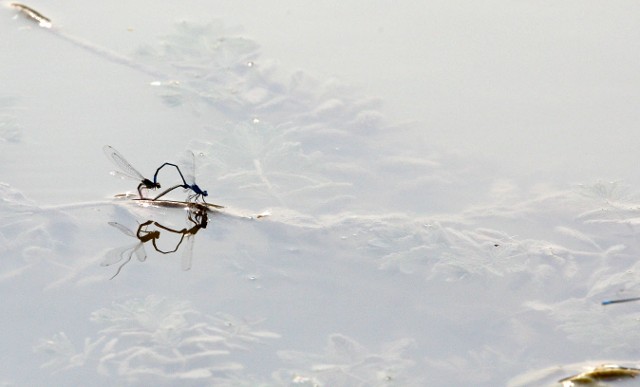
A couple mating damselflies in the reed pond in Rudong

Dragonflies were out in force!

This Bufo toad was seen swimming through the reeds.

Rudong had an impressive fishing fleet and was home to some very fresh seafood!

We met this elderly gentleman on the street and he provided us with some less than accurate directions to town. It seemed, when we got lost one afternoon, that none of the locals had any idea whatsoever how to get to their OWN town!!!

Cokie is great making his own entertainment. Give him a plastic bottle, some water and even some great mud, and he is in heaven!

Even getting stuck in the mud is fun! Although this could have had a different outcome if we were not there....

This lady made the best baos in town!

Sunrise in Rudong! The entire coast in this region of China appears to be dotted with wind turbines, otherwise known as "bird killers".

Sunset images here in China will have different things in the foreground than what I am used to. Most will be "industrial" sunsets!
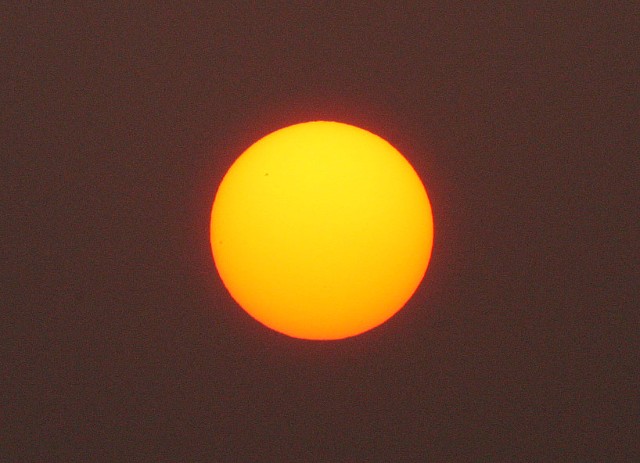
Zhang Lin pointed out the impressive sunspot (on the upper left quadrant of the sun) seen here.

Som is such a great partner!

Although this is not much of an image, it is still one of the rarest gull species on the planet. The Relict Gull (Icthyaetus
relictus) has a very restricted range and Rudong is at the very edge of the distribution and we were lucky to see it!
Species List for Rudong, China
- Japanese Quail (Cortunix japonica)
- Ring-necked Pheasant (Phasianus colchicus)
- Bean Goose (Anser
fabalis) *
- Mandarin Duck (Aix galericulata)
- Eurasian Wigeon (Anas Penelope)
- Mallard (Anas
platyrhynchos)
- Eastern Spot-billed Duck (Anas zonorhyncha)
- Northern Pintail (Anas acuta)
- Eurasian Teal (Anas crecca)*
10. Little
Grebe (Tachybaptus ruficollis)
11. Eurasian
or Great Bittern (Botaurus stellaris)*
12. Yellow
Bittern (Ixobrychus sinensis)*
13. Black-crowned
Night Heron (Nycticorax nycticorax)
14. Grey
Heron (Adeola cinerea)
15. Chinese
Pond Heron (Ardeoloa bacchus)
16. Eastern
Cattle Egret (Bubulcus coromandus)*
17. Little
Egret (Egretta garzetta)
18. Great
Cormorant (Phalacrocorax carbo)
19. Amur
Falcon (Falco amurensis)*
20. Northern
Hobby (Falco subbuteo)*
21. Peregrine
Falcon (Falco peregrinus)
22. Osprey
(Pandion haliaetus)
23. Eastern
Marsh Harrier (Circus spilonotus)*
24. Hen
Harrier (Circus cyaneus)*
25. Eurasian
Sparrowhawk (Accipiter nisus)*
26. Grey-faced
Buzzard (Butastur indicus)*
27. Eastern
Buzzard (Buteo japonicus)*
28. Common
Moorhen (Gallinula chloropus)
29. Black-winged
Stilt (Himantopus himanopus)
30. Northern
Lapwing (Vanellus vanellus)*
31. Grey
Plover (Pluvialis squatarola)*
32. Little
Ringed Plover (Charadrius dubius)
33. Kentish
Plover (Charadrius alexandrinus)
34. Lesser
Sand Plover (Charadrius mongolus)*
35. Eastern
Black-tailed Godwit (Limosa melanuroides)*
36. Bar-tailed
Godwit (Limosa lapponica)*
37. Whimbrel
(Numenius phaeopus)
38. Eurasian
Curlew (Numenius arquata)
39. Far
Eastern Curlew (Numenius madagascariensis)*
40. Common
Redshank (Tringa totanus)
41. Common
Greenshank (Tringa nebularia)
42. Green
Sandpiper (Tringa ochropus)*
43. Nordmann’s
Greenshank (Tringa guttifer)*
44. Terek
Sandpiper (Xenus cinereus)
45. Great
Knot (Calidris tenuirostris)*
46. Sanderling
(Calidris alba)
47. Red-necked
Stint (Calidris ruficollis)*
48. Dunlin
(Calidris alpina)
49. Spoon-billed
Sandpiper (Eurynorhynchus pygmeus)*
50. Broad-billed
Sandpiper (Limicola falcinellus)*
51. Heuglin’s
Gull (Larus heuglini)*
52. Relict
Gull (Icthyaetus relictus)*
53. Black-headed
Gull (Chroicocephalus ridibundus)
54. Saunders’s
Gull (Saundersilarus saundersi)*
55. Gull-billed
Tern (Gelochelidon nolitica)
56. Oriental
Turtle Dove (Streptopelia orientalis)
57. Red
Turtle Dove (Streptopelia tranquebarica)*
58. Spotted
Dove (Streptopelia chinensis)
59. Common
Kingfisher (Alcedo atthis)
60. Hoopoe
(Upupa epops)
61. Great
Spotted Woodpecker (Dendrocopos major)*
62. Long-tailed
Shrike (Lanius shach)
63. Azure-winged
Magpie (Cyanopica cyanus)
64. Common
Magpie (Pica pica)
65. Eastern
Great Tit (Parus minor)*
66. Barn
Swallow (Hirundo rustica)
67. Oriental
Skylark (Alauda gulgula)*
68. Zitting
Cisticola (Cisticola juncidis)*
69. Plain
Prinia (Prinia inornata)
70. Chinese
Bulbul (Pycnonotus sinensis)
71. Korean
Bush Warbler (Cettia canturians)*
72. Oriental
Reed Warbler (Acrocephalus orientalis)*
73. Black-browed
Reed Warbler (Acrocephalus bistrigiceps)*
74. Yellow-browed
Warbler (Phylloscopus inornatus)*
75. Pallas’s
Leaf Warbler (Phylloscopus proregulus)*
76. Vinous-throated
Parrotbill (Paradoxonris webbianus)*
77. Reed
Parrotbill (Paradoxornis heudei)*
78. Crested
Myna (Acridotheres cristatellus)
79. Red-billed
Starling (Sturnus sericeus)*
80. White-cheeked
Starling (Sturnus cineraceus)*
81. White’s
Thrush (Zoothera dauma)*
82. Grey-backed
Thrush (Turdus hortulorum)*
83. Eurasian
Blackbird (Turdus merula)*
84. Eyebrowed
Thrush (Turdus obscurus)*
85. Red-flanked
Bluetail (Luscinia cyanura)*
86. Daurian
Redstart (Phoenicurus auroreus)
87. White-throated
Rock Thrush (Monticola gularis)*
88. Grey-streaked
Flycatcher (Muscicapa griseisticta)*
89. Mugimaki
Flycatcher (Ficedula mugimaki)*
90. Blue-and-white
Flycatcher (Cyanoptila cyanomelana)*
91. Eurasian
Tree Sparrow (Passer montanus)
92. Grey
Wagtail (Motacilla cinerea)
93. Eastern
Yellow Wagtail (Motacilla tschutschensis)*
94. White
Wagtail (Motacilla alba)
95. Richard’s
Pipit (Anthus richardi)
96. Brambling
(Fringilla montifringilla)*
97. Eurasian
Siskin (Carduelis spinus)*
98. Chinese
Grosbeak (Eophonia migratoria)*
99. Black-faced
Bunting (Emberiza spodocephala)*
